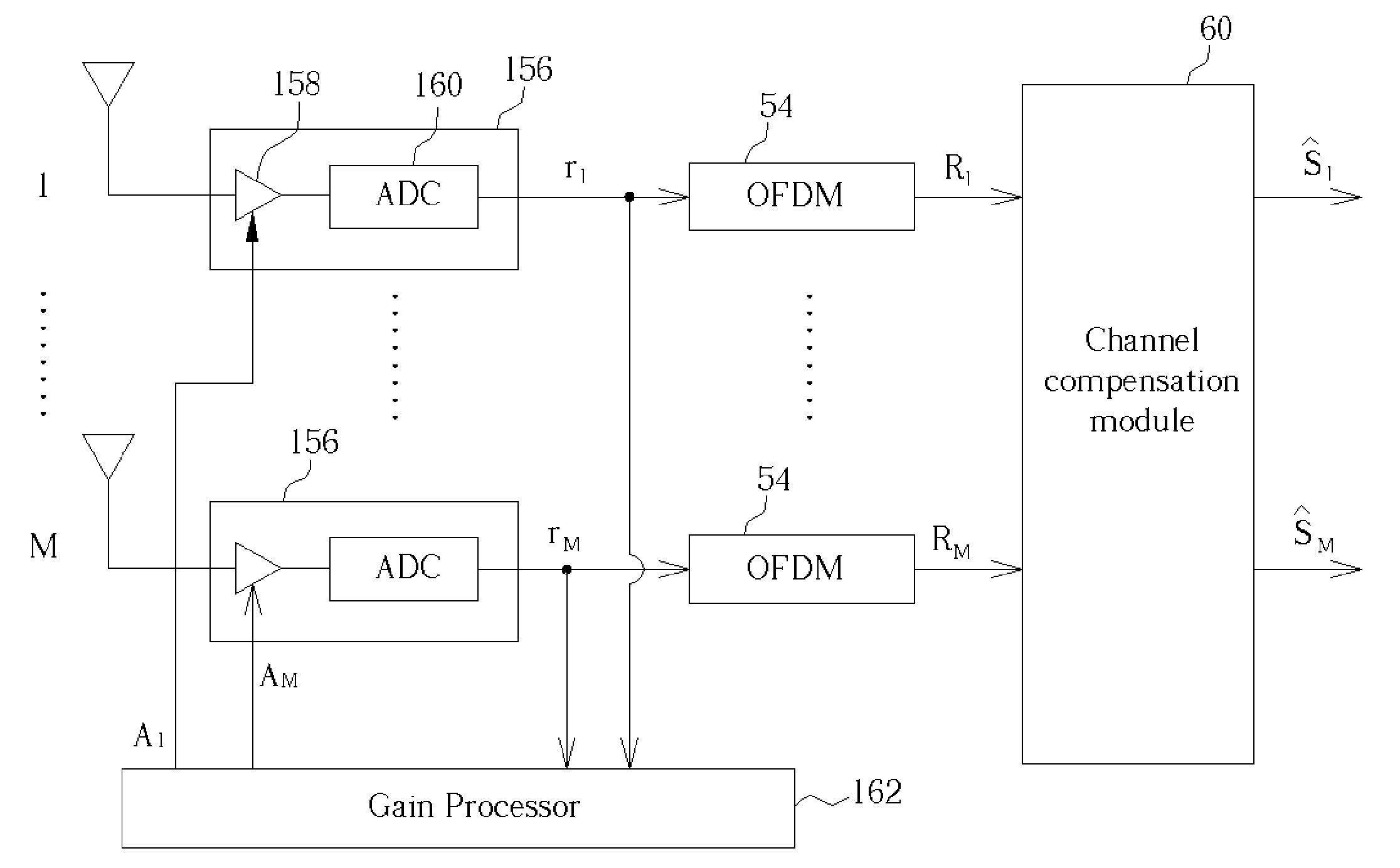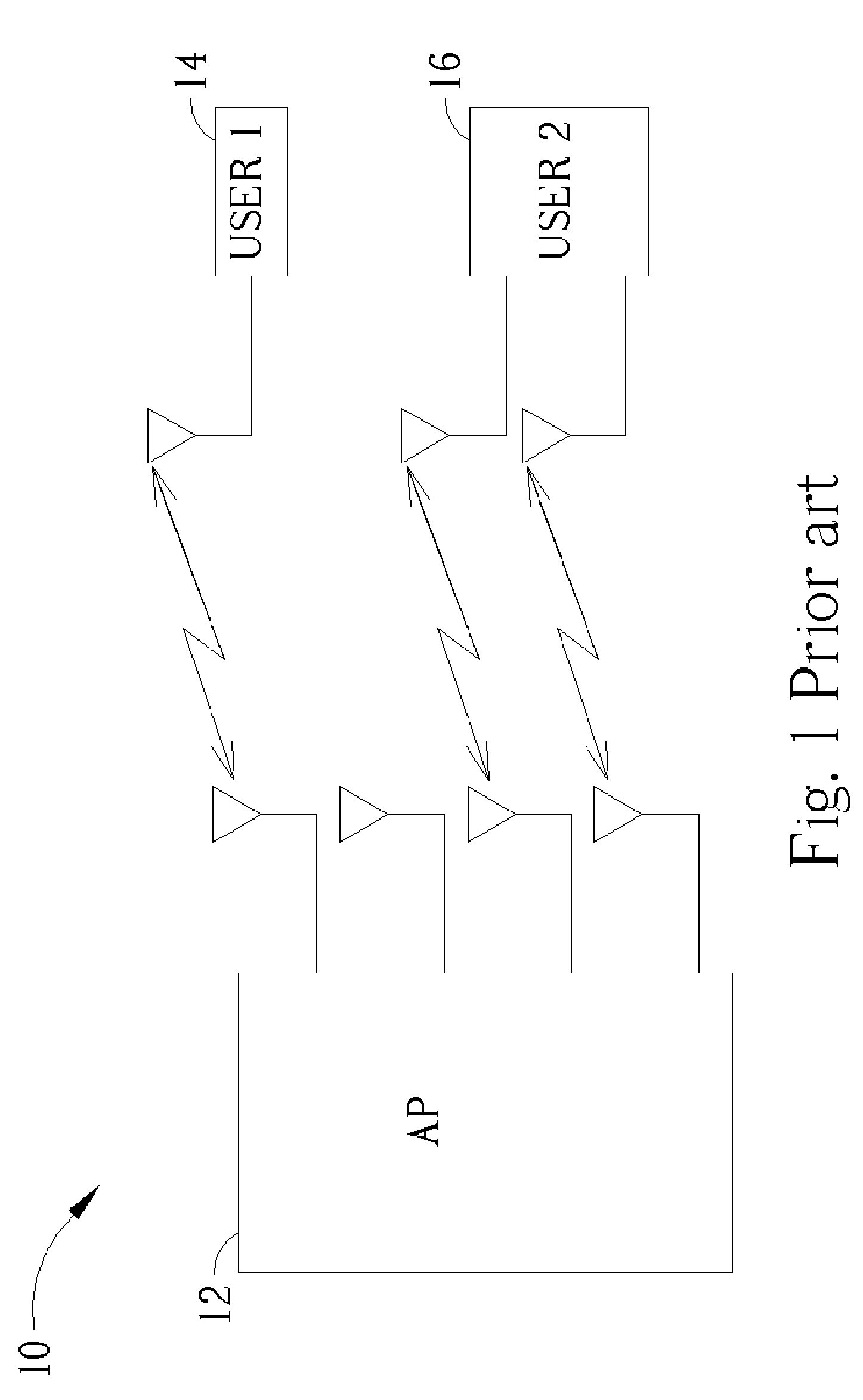Automatic gain control of multiple antenna OFDM receiver
a receiver and multiple antenna technology, applied in the field of wireless communication system, can solve the problems of 54 mbps transfer limit, prior art does not teach automatic gain control in a receiver having multiple antennas and corresponding data paths
- Summary
- Abstract
- Description
- Claims
- Application Information
AI Technical Summary
Benefits of technology
Problems solved by technology
Method used
Image
Examples
Embodiment Construction
[0029]General Configuration:
[0030]Please refer to FIG. 3, which is a schematic diagram illustrating signal transmission and reception in a multiple transmitter / receiver antenna application. When a group of signals s1-sM is transmitted along the pathways, h11 etc, shown, they are substantially simultaneously received as signals r1-rM after undergoing inter-antenna interference. Generally, for M transmitters and receivers, such transmission and interference can be described by the channel impulse response matrix as follows:
[0031]h=[h11h12⋯h1Mh21h22⋯h2M⋮⋮⋰⋮hM1hM2⋯hMM],(1)
where
[0032]h is a channel impulse response, and
[0033]M is a total number of antennas in the transceiver.
[0034]The digits of the index of each channel impulse response value, h, respectively indicate the receiver and transmitter antennas defining such channel. For example, the channel impulse response value h12 corresponds to the channel from a second transmitter antenna to a first receiver antenna. The channel impuls...
PUM
 Login to View More
Login to View More Abstract
Description
Claims
Application Information
 Login to View More
Login to View More - R&D
- Intellectual Property
- Life Sciences
- Materials
- Tech Scout
- Unparalleled Data Quality
- Higher Quality Content
- 60% Fewer Hallucinations
Browse by: Latest US Patents, China's latest patents, Technical Efficacy Thesaurus, Application Domain, Technology Topic, Popular Technical Reports.
© 2025 PatSnap. All rights reserved.Legal|Privacy policy|Modern Slavery Act Transparency Statement|Sitemap|About US| Contact US: help@patsnap.com



